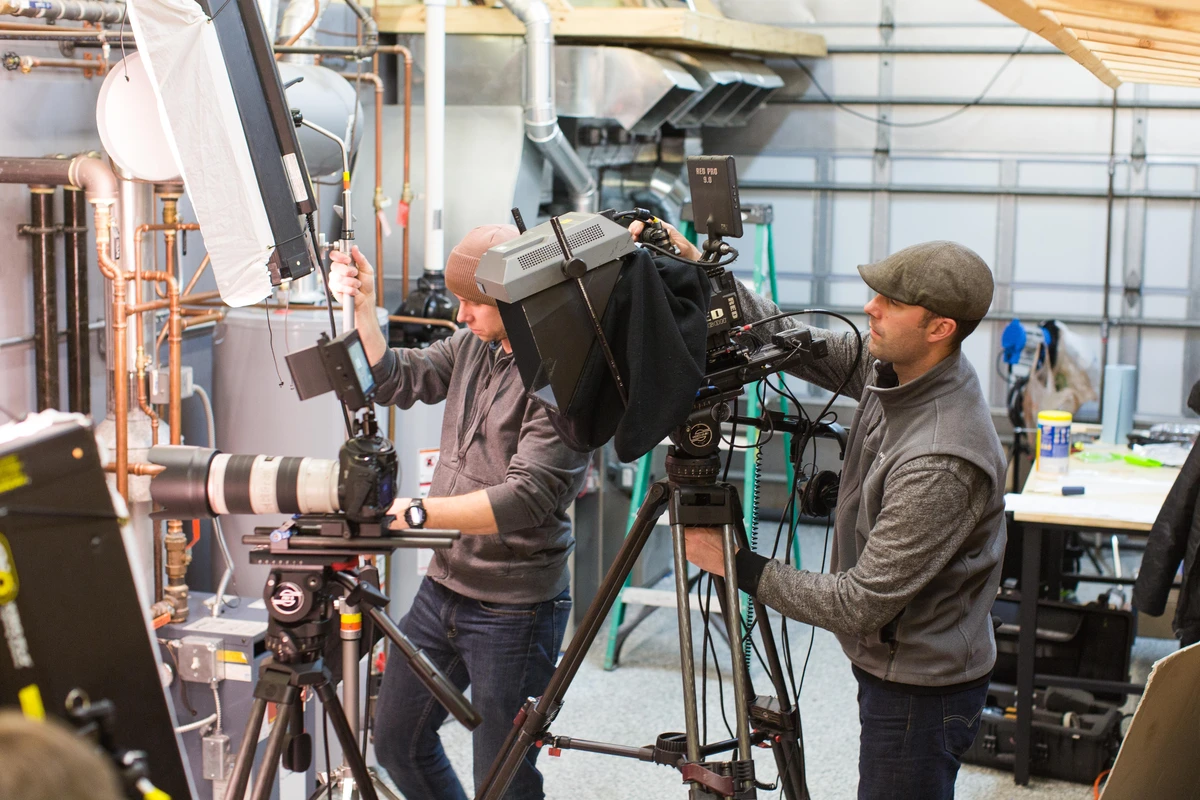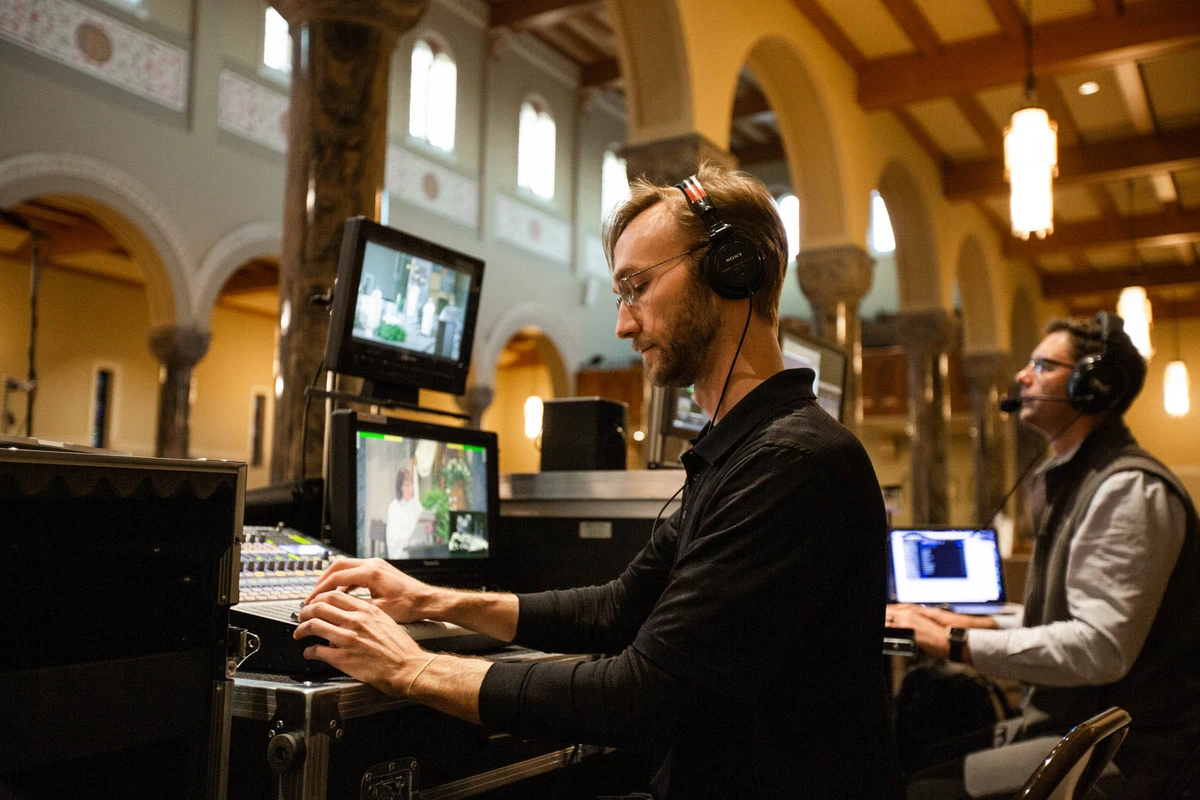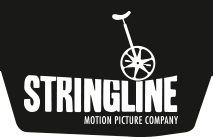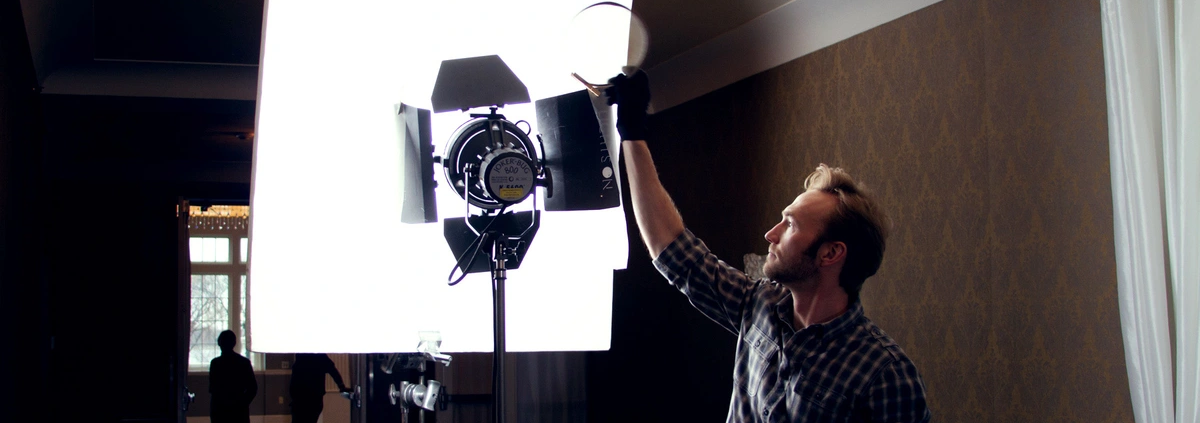Film Equipment: Everything a Filmmaker Needs to Get Started
Filmmaking is never “one size fits all.” You could make a film with nothing but a smartphone and a simple editing app. Or, you could raise millions of dollars and be on set with hundreds of crew members. Each film set will have different capabilities based on budget and experience.
Creating a quality film usually requires more equipment than just a phone. If you want to get started with filmmaking, reference this guide to learn about the equipment you need to get the job done. Again, some sets will have more equipment than what’s listed here, and some will have less, especially if you’re just starting out. But today’s article covers a solid middle-ground of film equipment you can use to get started.
1) Camera
The one piece of equipment you simply cannot make motion pictures without is a camera. While beginners can make it work with their smartphone, to make more high-quality films, you’ll want anything from a DSLR to a top-of-the-line digital cinema camera.
RED digital cinema cameras are arguably the best on the market, and we’re proud to shoot with them at Stringline Pictures. RED cameras outshine other digital cameras because of factors like:
- Ultra-high resolution (6k to 8k for all recent cameras)
- Low light capabilities
- R3D file format
- Color science
- Shoot in cinematic RAW format

2) Lenses
Different camera lenses change the perspective of the shot. When you’re just starting out, you can get by with one or two lenses, but as you improve and take your filmmaking to the next level, you’ll want to have these four main camera lenses on hand.
- 50mm: This lens represents how the human eye sees people and objects naturally. It’s great for handheld filmmaking, but beginners should use stabilizers or gimbals (which we’ll cover later.)
- 75 mm Telephoto: This lens, also called a long lens, is frequently used in filmmaking. It can cover a lot of ground because it is a zoom lens with multiple focal points.
- Anamorphic: These lenses capture a wide field of view and are great for including more foreground in any given shot.
- Wide-angle: When you need to fit a large object into the frame or draw attention to something in the foreground, wide-angle lenses get the job done.
3) Lights
Lighting makes or breaks a fantastic shot. Professional film sets always have lighting equipment so that crew members can simulate different times of day and weather conditions.

Three-Point Lighting Kit
A great starting lighting kit for indoor shooting is a classic three-point lighting kit. This kit allows you to establish the key light, fill light, and backlight.
Light Reflector
A simple but vital piece of lighting equipment to invest in is a light reflector. When a cast or crew member holds a light reflector, it can help bounce light from one source onto a subject. It can turn a dull shot into a beautifully-lit scene.
4) Audio Equipment
If there are dialogue scenes in your film, you need audio equipment to capture the actor’s lines. To best capture the sound, it’s highly recommended to have the following audio gear:
Boom Mic
You know that fuzzy-looking object on top of a long pole that you often see on film sets? That’s a boom mic. Boom microphones are attached to a boom pole, and they only pick up sound where they point. (This helps block out unnecessary or distracting sounds that occur during filming.)

Lavalier Mics
The most effective way to pick up dialogue directly from the actors is to clip lavalier mics to their bodies. This ensures that the dialogue will be crisp and easy to understand.
Headphones
The sound mixer on a film set is constantly monitoring the sound while shooting. Hooking them up with a nice pair of headphones allows them to catch any unexpected or undesired sounds during filming.
Portable Digital Audio Recorder & Audio Cables
Connecting audio cables from the various microphones to a portable digital audio recorder is what allows you to store the audio you capture in each take. When you use a portable digital audio recorder, you get two copies of the audio: one on the recorder and one on the camera. You can take the digital files from the audio recorders and use them in post-production editing.
5) Computer
You’ll need a reliable laptop or desktop computer to upload all of your video and sound files. Plus, when you need to take notes, reference a call sheet, or send an email, you’ll want your laptop handy on set.
6) Camera Stabilization Equipment
No one wants to work hard at filming only to be left with shaky footage. Use these pieces of film equipment to ensure a steady and professional result:
- Tripod: Holds the camera in place so you don’t have to hold it with your hands. Many have fluid rotating heads that allow you to pan the camera smoothly.
- Sliders: Camera sliders allow you to move smoothly horizontally from left to right or backward and forward.
- Gimbals: A gimbal is a more advanced device that allows a camera to rotate smoothly along any given axis. They’re definitely an investment, but they’re nice to have as you grow as a filmmaker.

7) Miscellaneous Gear: Easy to Forget but Incredibly Important
Sometimes, the most vital pieces of equipment on a film set are the smallest or seemingly most random. Other items on this list are definitely in the “nice to have” category for more advanced filmmakers.
- Sandbags: Why would you need sandbags on a film set? Well, you put them at the base of lighting equipment to keep the lights from falling over and hitting someone’s head. We’ll count that as pretty important.
- ND filters: Neutral Density (ND) filters are nifty filters that go over camera lenses. They work similarly to sunglasses for your eyes, as they block the light in a neutral way without changing the color.
- Backdrops: You may need certain backdrops to help set the scene effectively. Sometimes, you may have a use for a green screen, especially if you’re tackling a film with special effects.
- Camera bag: The camera is very expensive and precious, so it and other gear should be protected in a sturdy and waterproof camera bag.
- Drone: If you want to capture aerial footage for an establishing shot, this is best accomplished with a drone.
- Memory Cards: The last thing you want is to be one hour into shooting and you run out of storage on your memory card. Bring multiple memory cards with plenty of storage space.
- External Hard Drives: Similarly, external hard drives come in handy if you’re doing a lot of shooting and you need to offload footage from your memory cards to free up storage space.
8) Editing Software
Now, we’re moving off of the physical film set and into the world of post-production. Once you’ve shot all your coverage for the film, you need to edit it to put the final product together. A high-quality film should never rely on sketchy “free editing sites” on the internet. You’ll need reliable software.
Some of the most trusted video editing software include:
- Adobe Premiere Pro
- Adobe After Effects
- Avid Media Composer
- Blender
- Corel VideoStudio
- CyberLink PowerDirector
- DaVinci Resolve Studio 16
- Edius Pro 8
- Final Cut Pro X
High-quality editing software allows you to color correct and color grade your footage, which takes a film from good to “wow.” Color correction is the process of adjusting the color, contrast, and exposure of the film footage so that it appears natural. Color grading takes it one step further by “painting” over the footage to create an emotional mood or tone to the film.

9) Insurance (fun!)
Last but not least, we have the most fun item you need on a film set: insurance! Okay, okay… getting insurance is slightly annoying but highly necessary. If you plan to shoot your project in a public setting, you’ll need to secure general liability insurance.
This step is necessary because if you shoot in public locations, you will probably need a permit. And in order to obtain a permit, you’ll need general liability insurance.
The bigger the film sets, the more insurance is needed. If you and a few friends plan to shoot a short film at a local park or restaurant, you should be good with general liability insurance. If you’re raising thousands of dollars and hiring hundreds of actors and crew members… then you’ll need more comprehensive film production insurance.
Partner With a Team That Has All the Equipment on Hand
Investing in all the film equipment in this article takes a lot of time and money. Many beginning filmmakers or businesses wanting to create video content simply don’t have the resources to make it happen. Thankfully, you don’t have to call it quits simply because you don’t have an arsenal of film equipment.
You can partner with the skilled producers at Stringline Pictures. Our video production agency has everything you need to create a powerful commercial, corporate video, or animation. We’re based in Minnesota, but we’ll travel anywhere to help bring your vision to life! Tell us about your idea, and we’ll make the magic happen.



